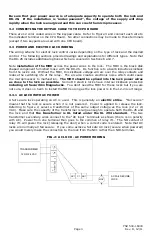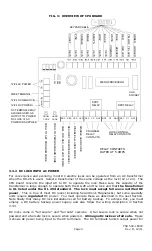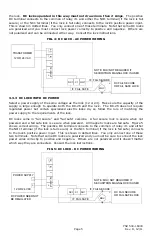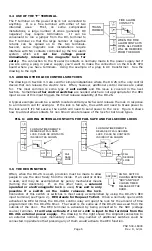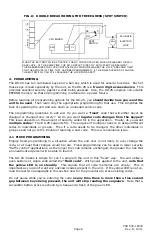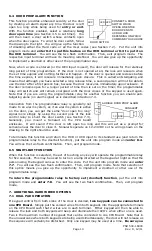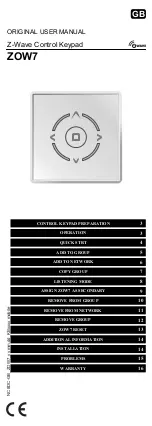
PN# 500-16900
Page 3
Rev. D, 12/11
Be sure that your power source is of adequate capacity to operate both the lock and
DK-26. If the installation is "under-powered", the voltage of the supply will drop
rapidly when the lock is energized and this can crash the microprocessor.
3.2 CONNECTING THE KEYPAD CABLE TO THE CPU BOARD
There are 12 color coded wires in the keypad cable. Refer to Figure 3 and connect each wire to
the indicated terminal on the CPU Board. No other connections may be made to these terminals
(except if two keypads are used with one CPU board).
3.3 POWER AND ELECTRIC LOCK WIRING
The wiring scheme for electric lock control varies depending on the type of lock and the desired
control. The following sections provide drawings and explanations for different types. Note that
the DK-26 includes additional options which are covered in Sections 6 and 7.
Note installation of the MOV across the power wires to the lock. The MOV is the black disk
shaped component furnished loose with the DK-26. Its function is to absorb inductive kickback
from the lock’s coil. Without the MOV, this kickback voltage will arc over the relay contacts and
reduce the switching life of the relay. The arc also creates electronic noise which could cause
the microprocessor to malfunction. The MOV should be spliced into the lock power wires
as close to the lock as possible. Some DC electric locks have internal kickback protection
including all Securitron Magnalocks. You don’t need the MOV for these locks but if you are
not sure, it does no harm to install the MOV so long as the lock power is in the 12-24 volt range.
3.3.1 AC LOCK WITH AC POWER
A fail secure lock operating on AC is used. This is generally an electric strike. “Fail secure”
means that the lock is secure when it is not powered. Power is applied to release the lock.
Referring to figure 2, select a transformer of the same output voltage as the lock (12 or 24
VAC). Make sure the capacity of the transformer is large enough to operate both the DK-26 and
the lock and that the transformer is UL listed under the UL 294 standard. The two
transformer secondary wires connect to the “AC input” terminals as shown (there is no polarity
with AC). Power from one terminal then goes to the common of relay #1. The NO contact of
relay #1 will power the lock (releasing the door) when a correct code is entered. Note that AC
locks are normally all fail secure. If you come across a fail safe AC lock (secure when powered)
you would merely make the connection to the lock from the NC1 rather than NO1 terminal.
FIG. 2: AC LOCK - AC POWER WIRING
NC1
C1
NO1
A
C
IN
F
D
C
IN
/O
U
T
+
TRANSFORMER
12 OR 24 VAC
AC FAIL SECURE
LOCK
MOV
Summary of Contents for Securitron DK-26
Page 23: ......




